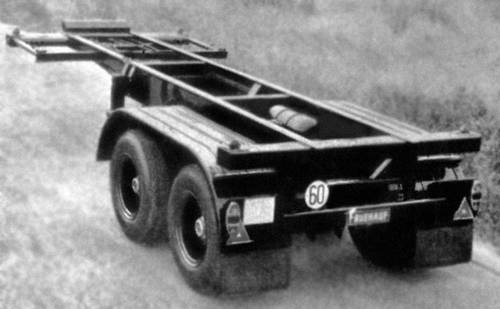Перевод и анализ слов искусственным интеллектом ChatGPT
На этой странице Вы можете получить подробный анализ слова или словосочетания, произведенный с помощью лучшей на сегодняшний день технологии искусственного интеллекта:
- как употребляется слово
- частота употребления
- используется оно чаще в устной или письменной речи
- варианты перевода слова
- примеры употребления (несколько фраз с переводом)
- этимология
ship-building year - перевод на русский
общая лексика
судостроительная верфь
['ʃipbildə]
общая лексика
судостроитель
кораблестроитель
существительное
общая лексика
кораблестроитель
судостроитель
кораблестроитель, судостроитель
Определение

Википедия

Viking ships were marine vessels of unique structure, used in Scandinavia from the Viking Age throughout the Middle Ages. The boat-types were quite varied, depending on what the ship was intended for, but they were generally characterized as being slender and flexible boats, with symmetrical ends with true keel. They were clinker built, which is the overlapping of planks riveted together. Some might have had a dragon's head or other circular object protruding from the bow and stern for design, although this is only inferred from historical sources. Viking ships were used both for military purposes and for long-distance trade, exploration and colonization.
In the literature, Viking ships are usually seen divided into two broad categories: merchant ships and warships, the latter resembling narrow "war canoes" with less load capacity, but higher speed. However, these categories are overlapping; some transport ships would also form part of war fleets. As a rule, ship lanes in Scandinavia followed coastal waters, hence a majority of vessels were of a lighter design, while a few types, such as the knarr, could navigate the open ocean. The Viking ships ranged from the Baltic Sea to far from the Scandinavian homelands, to Iceland, the Faroe Islands, Greenland, Newfoundland, the Mediterranean, the Black Sea and Africa.
One particular advantage of the Viking ship is the comparatively low weight, making land transport and portage routine, as in crossing Jutland instead of rounding Skagen to enter or exit the Baltic Sea, and travel on the river networks of Eastern Europe.


![The [[Gokstad ship]], on display at the [[Viking Ship Museum in Oslo]], Norway The [[Gokstad ship]], on display at the [[Viking Ship Museum in Oslo]], Norway](https://commons.wikimedia.org/wiki/Special:FilePath/Gokstadskipet1.jpg?width=200)
![The [[Ladby ship]] is part of a [[ship burial]] that has been preserved where it was discovered, with a museum built around it The [[Ladby ship]] is part of a [[ship burial]] that has been preserved where it was discovered, with a museum built around it](https://commons.wikimedia.org/wiki/Special:FilePath/Ladbyskibet.jpg?width=200)
![The [[Söderala vane]], presumably once used on a Viking ship The [[Söderala vane]], presumably once used on a Viking ship](https://commons.wikimedia.org/wiki/Special:FilePath/Object from the exhibition We call them Vikings produced by The Swedish History Museum (13619749314).jpg?width=200)
![The remains of Skuldelev 3 in the [[Viking Ship Museum (Roskilde)]] The remains of Skuldelev 3 in the [[Viking Ship Museum (Roskilde)]]](https://commons.wikimedia.org/wiki/Special:FilePath/Skuldelev Viking ship at Vikingeskibsmuseet Roskilde, Denmark.jpg?width=200)
![The remains of the Oseberg Ship, now located in the [[Viking Ship Museum (Oslo)]] The remains of the Oseberg Ship, now located in the [[Viking Ship Museum (Oslo)]]](https://commons.wikimedia.org/wiki/Special:FilePath/Wikingerschiff Oslo.jpg?width=200)
![Babbitt's [[rotary engine]] Babbitt's [[rotary engine]]](https://commons.wikimedia.org/wiki/Special:FilePath/BT Babbitts Rotary Engine.jpg?width=200)
![Austronesian]] ocean-going vessel Austronesian]] ocean-going vessel](https://commons.wikimedia.org/wiki/Special:FilePath/Fijian double canoe, model, Otago Museum, 2016-01-29.jpg?width=200)
![BAE's]] [[Portsmouth]] Shipyard BAE's]] [[Portsmouth]] Shipyard](https://commons.wikimedia.org/wiki/Special:FilePath/HMS Dauntless D33.jpg?width=200)
![1}} built by [[Daewoo Shipbuilding & Marine Engineering]] in [[Okpo-dong]], [[South Korea]] 1}} built by [[Daewoo Shipbuilding & Marine Engineering]] in [[Okpo-dong]], [[South Korea]]](https://commons.wikimedia.org/wiki/Special:FilePath/Hellespont Alhambra-223713 v2.jpg?width=200)
.png?width=200)
![pinas]]'', using traditional Austronesian edge-dowelled techniques. Note the protruding dowels on the upper edges of the planks and the fiber caulking in the seams. pinas]]'', using traditional Austronesian edge-dowelled techniques. Note the protruding dowels on the upper edges of the planks and the fiber caulking in the seams.](https://commons.wikimedia.org/wiki/Special:FilePath/Naga Pelangi building without frames.jpg?width=200)
![Shipwrights building a [[brigantine]], 1541 Shipwrights building a [[brigantine]], 1541](https://commons.wikimedia.org/wiki/Special:FilePath/Pizarroshipbuilding.jpg?width=200)


![A two-masted Chinese junk, from the ''Tiangong Kaiwu'' of [[Song Yingxing]], published in 1637 A two-masted Chinese junk, from the ''Tiangong Kaiwu'' of [[Song Yingxing]], published in 1637](https://commons.wikimedia.org/wiki/Special:FilePath/Tiangong Kaiwu Ship.jpg?width=200)
